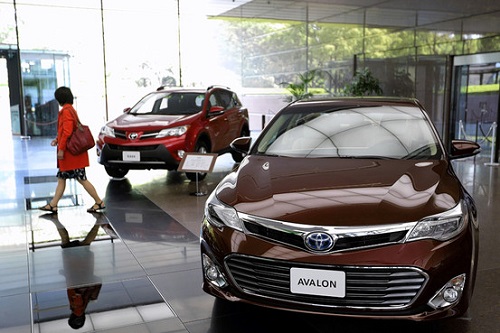Import Tariff Reductions Have Little Impact On Vehicle Prices
Source: Vientiane Times
The prices of vehicles in Laos remain high even though import tariffs on many products including vehicles have been reduced to five percent, much to the disappointment of recent purchasers.
Deputy Director of the Foreign Trade Policy Department, Mr Saysana Sayakone told Vientiane Times recently that the prices of vehicles will remain rather high as buyers still have to pay consumer tax.
He explained that the Lao PDR had begun to reduce import tariffs on goods in 2008 and now import tariffs on many products have been reduced to zero and the tariff on vehicles to five percent. Previously, import tariffs on cars stood at 40 percent.
Presently, vehicle importers have the option to use the D form for import tariff exceptions, after certifying the date of document submitting and the date of receiving the Certificate of Origin, which must be kept by the company or factory.
 |
| Tariffs on new vehicles entering Laos have been reduced to five percent from 40 percent. |
This is required at the pickup time by the Certificate Origin Officer or used to follow up when the Certificate of Origin is not completed.
The Foreign Trade Policy Department expects that vehicle import tariffs will be reduced to zero percent within 2018.
But Mr Saysana explained that the reduction in import tariffs won’t mean that buyers will necessarily be able to obtain cheaper cars as they will be charged consumer tax.
Many potential new car buyers are known to be waiting until import tariffs hit zero percent as they think they will get a better deal.
Officials at the Department of Taxation also pointed that vehicle imports will continue to increase this year, even as consumer tax has increased but Lao people’s purchasing power is still high, based on the economic growth rate.
Lao people also have more options when it comes to buying vehicles, due to various offers by motor companies including being able to pay by installments with low interest rates or even zero interest levied.
These kinds of inducements have attracted many more Lao people to become new car owners and this phenomenon is expected to drive up the rate of vehicle imports over the coming years.
The Department of Public Works and Transport reported recently that the number of vehicles in Laos increased 8.17 percent in 2015 compared to 2014.
In that time, the total fleet of vehicles on the nation’s roads grew from 1,577,184 to 1,717,504 vehicles, including 1,326,868 motorcycles, 337,449 cars and 53,187 trucks.
Vientiane has the largest number of vehicles at 721,882, followed by Savannakhet with 273,279 and Champassak province with 145,289.


